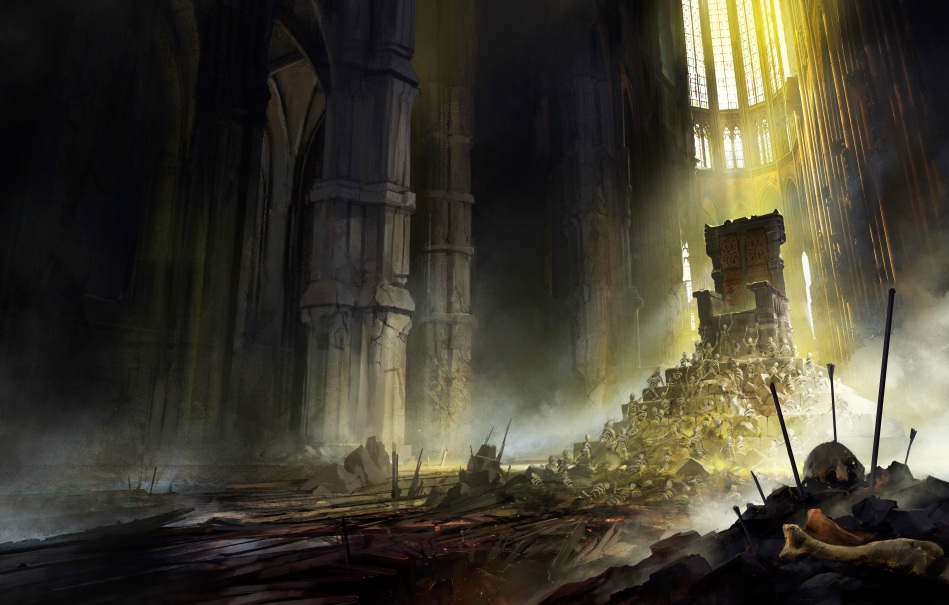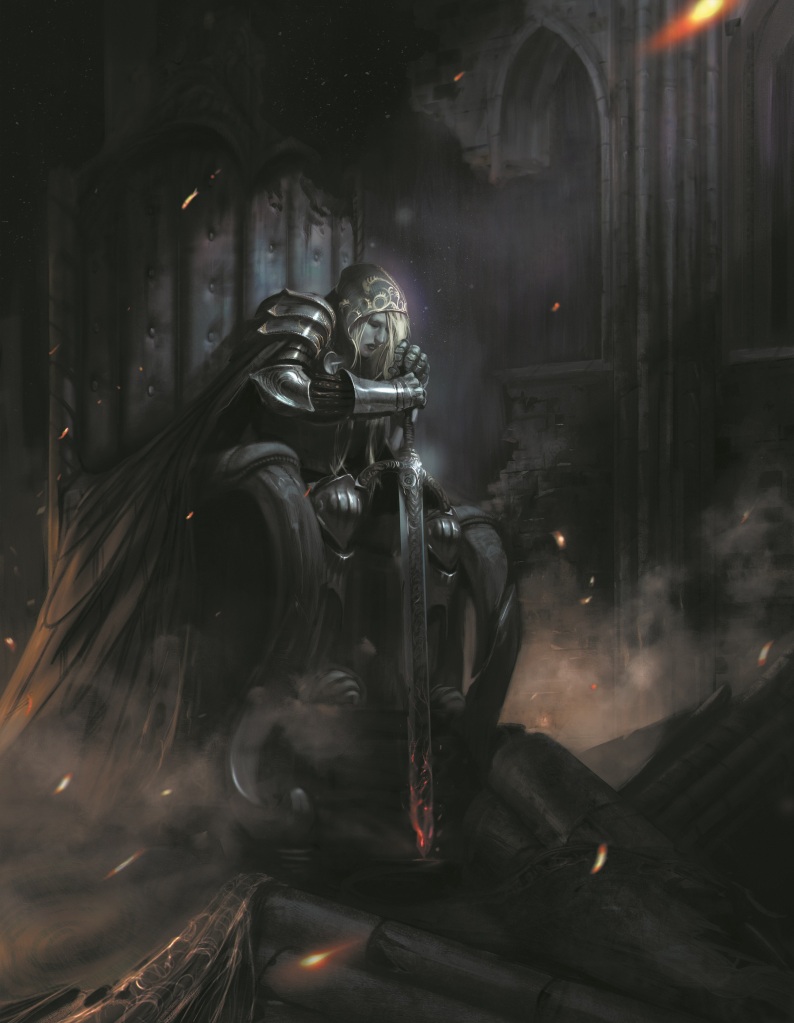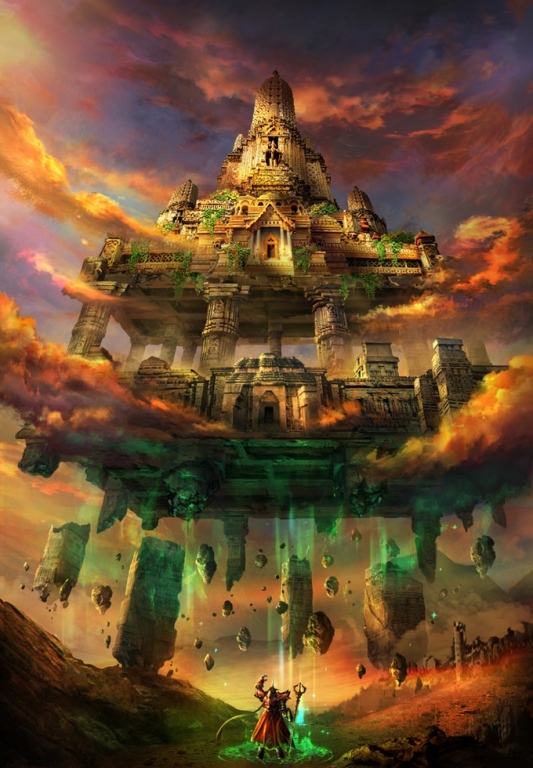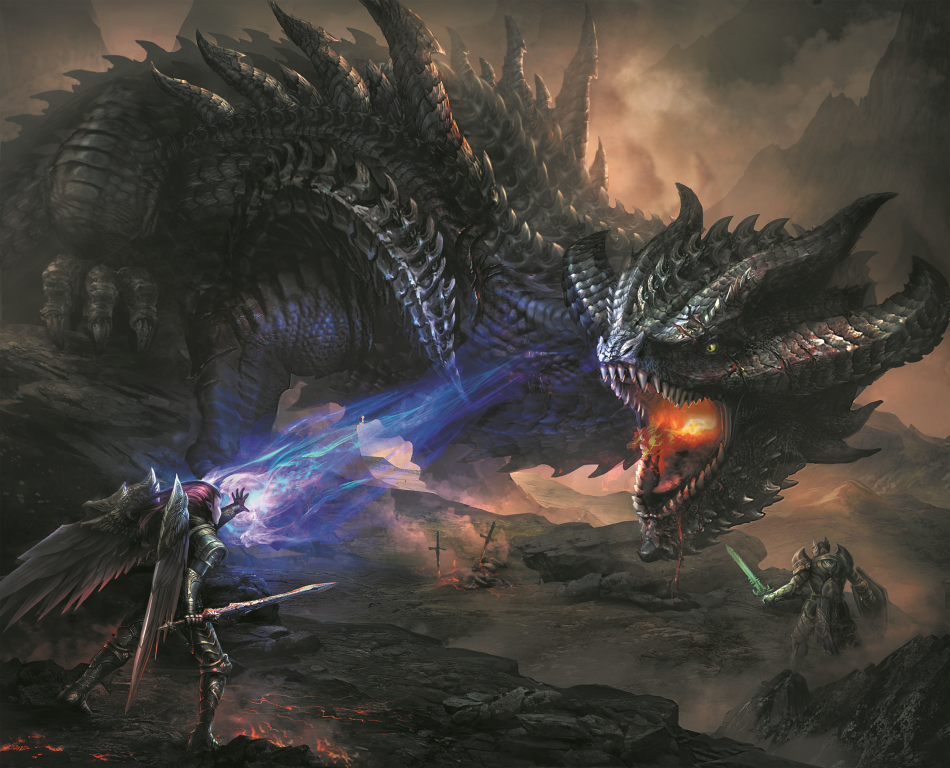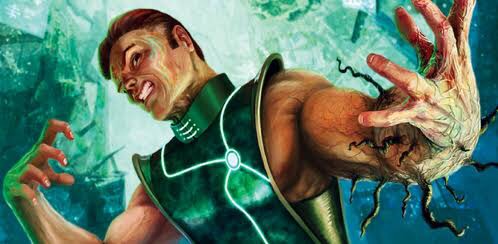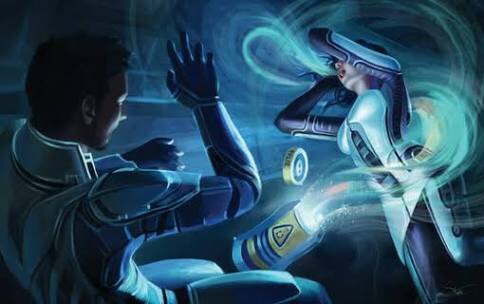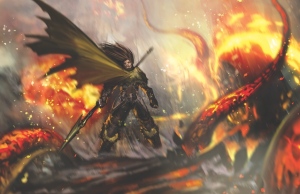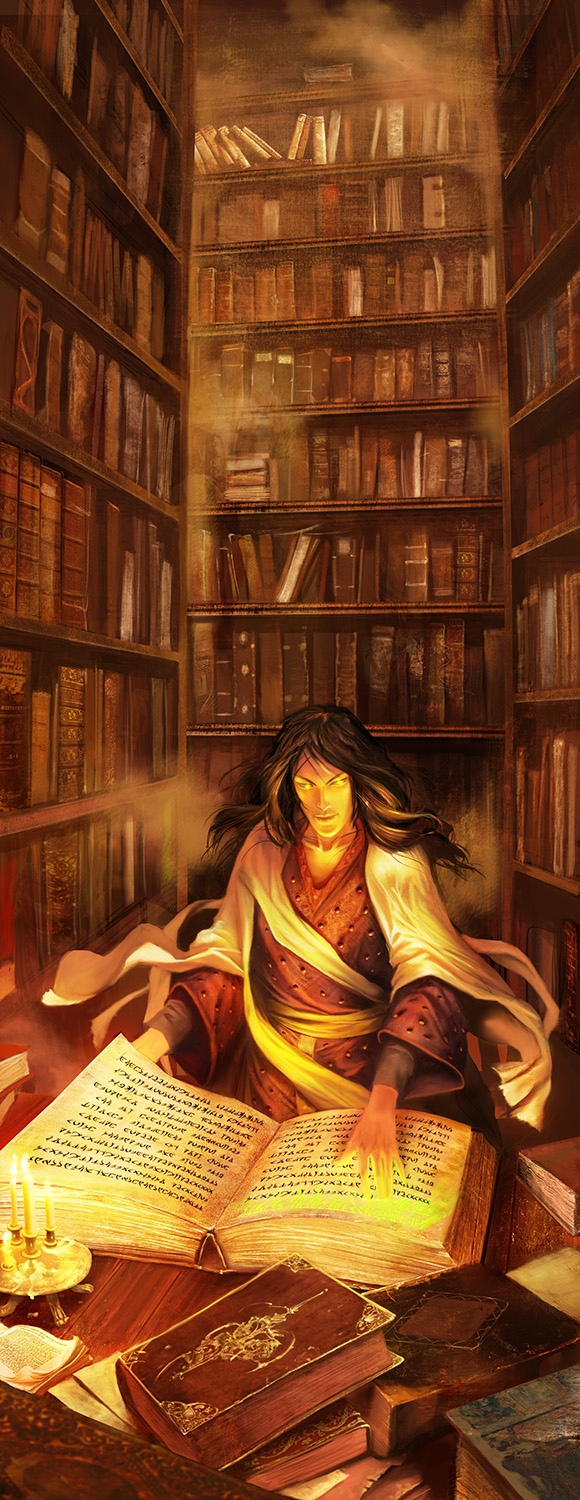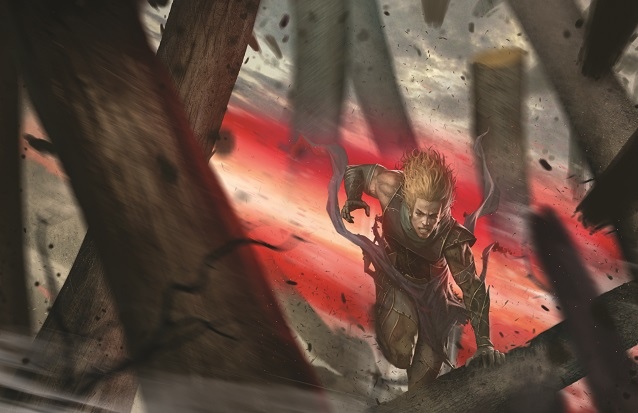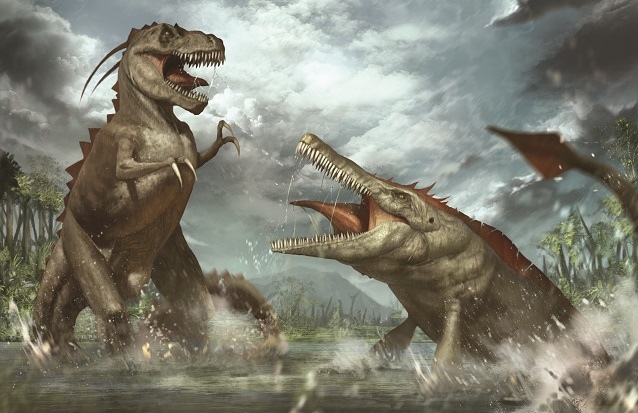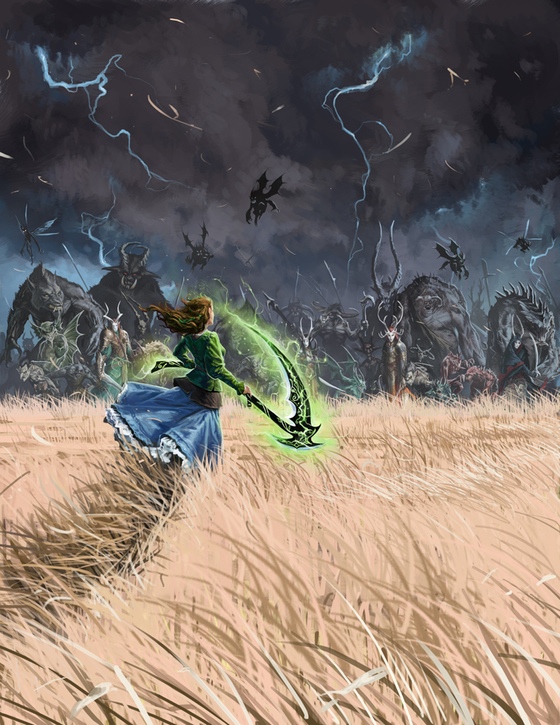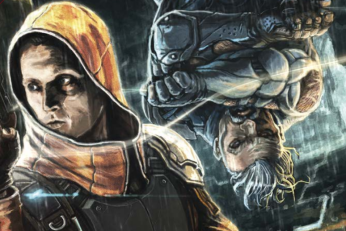Following the core games of Chronicles of Darkness, the designers were left with a question of where to go from there. The first of their limited lines was Promethean: the Created, a game about monsters who were seeking to become human.
As a game line, it was popular, but often ran into issues with actual play. With a revitalized and renewed Promethean 2.0 on an early release, I’m going to take a crack at this one.
Raid some graves and wait for lightning to strike, this is Promethean: the Created.
Deity and Demiurge
The history of the Created is…sketchy at the best of times. Part of this is explained simply by the fact that, of all the creatures in the Chronicles of Darkness, Prometheans are likely the most rare. Their manner of creation, however, is not up for debate.
A human, within the grips of madness, attempts to animate an inanimate object, granting it life. How this happens, and the reasons, vary a bit, but one thing is consistent: obsession. This obsession attracts Pyros, the Divine Flame, and allows the Demiurge (creator) to imbue non-living matter with life.
The issue with this is…it’s wrong. I don’t mean morally, but that it literally should not work. Prometheans are created, but they are in a world that rejects their very nature and existence. Humans feel it on an instinctual level and begin to obsess over them. This is usually hatred, but can manifest in a lot of other unfortunate, and always harmful, ways.
Pyros itself isn’t exactly a morally positive force. It has two sides, and the negative is called Flux. Where Pyros creates, Flux consumes. This leads to entities called Pandorans, failed attempts at Prometheans, which hunt and consume sources of Pyros.
Prometheans, then, are in a sorry state: they are aware, somewhat alive, but flawed. And so they did as most creature do: they sought a way to change it. Alchemy became their source. After all, it offered transformation: lead to gold. Prometheans modeled themselves after these ideas and began their magnum opus: find a way to become human.
So begins their Pilgrimage. Where it ends…who can tell?
The premise of Promethean is…difficult. Being an entitiy which is effectively a walking hate generator…isn’t exactly something someone does to unwind. I think that might be why it didn’t do as well as later gamelines. The second edition did a lot to help with this, though, namely hammering down more precise methods for how certain Prometheans come about as well as making a lot of things more ambiguous. However, it also hammered out how the Magnum Opus can be achieved. All Prometheans have a goal…and a good way to achieve it. Further, from the get go, you have ways to limit or reduce the hatred you get. It’s still a struggle…but this is Chronicles of Darkness we are talking about.
It’s…alive?
Making a Promethean follows the same formulas you’d expect. Most, but not all, belong to a Lineage. Each Lineage represents an original Created that later created more of its own, passing down certain traits like a family line. Each has a humour, most modeled after the traditional four humours with a couple of oddballs. The Lineages are:
- Frankensteins: Oddly, the newest of the Lineages, their yellow bile humour makes them quick to anger. The first was, of course, the archetypical Frankenstein’s monster. But you can call him Mr. Varney.
- Galateids: Tracing their lineage to Galatea, these Prometheans were made to love, but their sanguine humour makes them prone to embody its darkest aspects.
- Osirans: Cold to the extreme, they claim to be the oldest of the Lineages, tracing their ancestry to Egypt and the legend of Osiris. Their humor is Phlegm, and it makes them a calculating lot.
- Tammuz: The Named were created to be slaves, but they rebuke that concept. The Golem of Prague was, perhaps, the first of their kind. Their black bile makes the taciturn and grim.
- Ulgan: Ripped apart in sacrifice to spirits, the Ulgan are not entirely of this world. Their ectoplasm humor makes them kindred to spirits, and…somewhat odd.
- Unfleshed: Proof that Pyros is hardly discerning, these are animate machines, created not to be human, but rather to be artificial constructs. Their oil humour makes them obedient and servile, but potentially volatile.
- Extempore: Unique lineages which hail from many different possible places. They may be failed experiments, or entirely new Lineages.
Each Lineage has what’s called a Bestowment. These are traits which are related to the Lineage and can be used to one’s advantage. A Frankenstein, for example, might have the ability to use their patchwork nature to sew other parts to themselves while a Tammuz might be incredibly stalwart and unshakable.

Push them too far, and…
The next step, of a fashion, is the Refinement. Refinements are, essentially, stepping stones on the path to being human. These are basically Promethean’s version of factions. The difference is that, unlike others, faction changing is required in the path to humanity. Each has an aspect of how a Promethean wants to change themselves. They are divided into common and uncommon. The common refinements are:
- Aurum, Refinement of Gold: “Monkey see, monkey do” is the name of the game for Mimics. They seek to become human by…studying humanity. Most Prometheans will go through it at one point or another.
- Cuprum, Refinement of Copper: The Pariahs seek to refine themselves in an almost monastic, hermetic manner. They seek to hone themselves mentally and physically.
- Ferrum, Refinement of Iron: Survival is the name of the game for Titans. They will use their body to endure any trial. Their notion is that they will take their stolen body and make it their own.
- Plumbum, Refinement of Lead: Originists look to the start in the hopes to see where to go. They, more than others, seek to understand the Promethean nature so as to move on from it.
- Stannum, Refinement of Tin: Unique among refinements in that it’s not so much a conscious choice as a reaction. Any Promethean can become a Fury, requiring no training or time. All they can do after is work their way out of Torment and hope to gain something from it.
That does it for the common refinements. All Prometheans travel through these, and they require no tutoring or teaching. That said, Prometheans also do some…unusual studies to refine themselves.
- Aes, Refinement of Bronze: Sentries are, on a whole, good people. They seek to become better people by acting as help to others. In a lot of ways, they seek to find humanity through sacrifice.
- Argentum, Refinement of Silver: Humans aren’t the only things alive in the world, and Mystics seek to understand them. Really designed for crossovers, they look to other supernatural creatures, seeking to understand humans through the shadowy figures around them.
- Cobalus, Refinement of Cobalt: Cathars don’t worry too much about messing up. Impurity is what they look to refine, increasing control of their flaws to understand their own shortcomings and how to improve them.
- Mercurius, Refinement of Quicksilver: Pyros, the mystic animating energy, is the focus of Savants. Something of a meta-refinement in that it seeks to teach a Promethean how alchemy works to better understand how to use it in the future.
- Phosphorum, Refinement of Phosphorus: Most Light-Bringers are daredevils to the extreme. They seek to blaze a trail forward, never turning back. Of course…twice as bright…half as long…
One other refinement bears mentioning, but I’ll get to that one later.
A lot of the rest is familiar, but a few things that bear mentioning.
Virtue and Vice are replaced by Elpis and Torment. Elpis is what drives your character toward their Great Work. Torment, by contrast, causes you to stumble when you use it. Torment bears mentioning because it is a trait as well as a state of being that one can fall into. Torment is, basically, an alchemical imbalance. The humour takes over, driving their actions.
The Promethean power stat is called Azoth, a measure of how much the Divine Fire is condensed in a Promethean. It has a lot of the same traits, but has a couple odd ones as well. Azoth, like fire, radiates and can be detected. this can be an issue as Pandorans can sense the energy and use it to track a wayward Promethean. It also increases Disquiet and Wasteland (more later). One odd bit is that a Promethean can, if they desire, lower their own Azoth for 24 hours. This lets them get by a little easier.
I Want to be a Real Boy
The story of Promethean is one of transformation. Alchemy, that odd interim between spiritualism and science, became the method the Created used to attain this. The game’s theme, then, is a bit of a taoist idea: it’s the journey, not the destination.
Playing a Promethean is unique. See, when I said that the world hates Prometheans, I mean that in a very literal sense: the universe thinks they are wrong. Humans known on an intuitive level. The longer a Created stays around people, the more this causes an issue called Disquiet. Humans become unhealthily obsessed with the Promethean, manifesting in various ways, but almost always ending in violence and rejection.
However, this is somewhat smaller compared to another issue: the Wasteland. Effectively, the Wasteland is the cosmic equivalent of Disquiet: the world is rejecting the Promethean. This manifests a lot of ways, but none of them are good. Prometheans can only really offset this in a few ways. One is by ritually bleeding their Azoth out into a prepared area. Working with other Prometheans and creating bound Throngs is another way, with different Legacies helping to balance things out.
If Azoth gets too bad, it can lead to a Firestorm. These manifest as destructive outpouring of pyros…and it’s always bad. Weather, earthquakes, flesh and mind warping energies…all can happen. There are a couple of good aspects. One is that it can clear a wasteland completely, though this is a bit of a desperate act. The other is that it can aid prometheans or harm their foes. It’s not a great method, but it can be useful.

Bzzzzzt
The Promethean condition is a somewhat unique one. As alchemical furnaces, they can do things others can’t. Powers are called Transmutations as a result. Each Transmutation is granted by a Refinement. This is a mechanical difference in that a Promethean might shift between many, but the understanding of each is unique. A bit of an odd thing is that, as a result, a Promethean might learn a full tree in one Refinement and need to relearn it under another. It’s somewhat offset by the fact that you get some powers simply by joining. Transmutations range a bit, from using Pyros to enhancing one’s own strength.
One other is Vitriol, which is represented as a unique form of experience. Basically, it’s gained slowly over time, but let’s Prometheans raise their power or bind Transmutations to themselves permanently. Both of these are highly valuable, and Vitriol experience is vanishingly rare. It’s somewhat odd, however, because it’s not an abstraction: it’s a literal substance and, as such, can be stolen. Pandorans are the most likely culprits, but anyone with the proper knowledge can do so…even Prometheans.
However, all of this is really summed up in Pilgrimage, which is the morality stat of the game, and it’s unique. Basically, a Pilgrimage is a set of markers, called Milestones, that a Promethean must attain before he can achieve humanity. Some of these are set in the path as he winds through his Refinements. In each, he takes on a Role which defines how he approaches that Refinement as an aspect of study. This is probably my favorite aspect of 2.0. In a lot of ways, it makes the game more personal, but also defines the journey along the way. A promethean must travel through his Pilgrimage, but it leads to the Magnum Opus: the New Dawn, a chance to be human again. Second edition lays it out nicely, even detailing what happens after. It’s rare, but this offers a chance at a good ending, which, for the Chronicles of Darkness, is a rare thing indeed.
Of course, getting there is difficult…
Fire Bad
Disquiet is…well, a bitch. It twists and warps people against you. Other supernaturals aren’t really immune, either. In fact, everyone except Beasts and Demons has it affect them in some way. Demons can even still feel it, it just doesn’t affect how they behave.
It might seem, then, that everything is antagonistic toward you. And that’s…kinda true, actually…
Still, even Prometheans have a few special enemies…oh joy…
The first on the list are the most obvious: pandorans. Pandorans are, basically, what happens when a Promethean tries and fails to make a new one of himself. They are creatures of Flux, and as such, seek to consume and destroy. They’re feral things, twisted and distorted, and are endlessly hungry for pyros…the easiest way to find that being a Promethean. Worse still are sublimati. These are pandorans that assume a twisted kind of intelligence. Unlike normal pandorans…sublimati are fully sapient and very, very cruel. At first glance, they might be mistaken for a fallen Promethean, but they are still creatures of flux.
Speaking of creatures of Flux, remember how I mentioned there was one final refinement? Well, that would be the centimani, the refinement of flux. Rightly called freaks, centimani are those prometheans who abandon their Pilgrimage to embrace being monsters. There are a couple of things to note. First is that it’s a refinement. Unlike a lot of the evil factions, there’s nothing stopping a Hundred Handed from using a quick burst to Stennum to escape and begin the process of returning to the path. The second is that…honestly, Centimani are probably among the more sympathetic villains. While most evil factions are just that, a Centimanus usually has given up out of despair, desperation, or even simple curiosity. They will do terrible things, but…well, there’s nothing that prevents them from coming back, though it may be difficult.
Mortal foes are even more strange, particularly alchemists. Alchemists are capable of using pyros, but to do so warps them. Simple alchemists are those who use their lesser abilities to help themselves. However, some alchemists discovered that Prometheans can be…harvested for their pyros and vitriol. Using it gives alchemists great power…at the cost of their sanity. Alchemists are sort of a mirror for Prometheans. A promethean wants to be human, and is willing to give up the benefits of his state to do so. An alchemist abandons humanity for the sake of being transhuman like a Promethean.
One last set of players worth mentioning are the Qashmallim. No, I don’t know how you say that, but these are basically entities of the Divine Fire. They often appear as fiery apperations, not unlike the burning angels of the Bible. They serve as…well, somewhat odd entities. Most seek to motivate Prometheans along their Pilgrimage…though this can happen in odd or even contradictory ways. Some are warriors, some are judges, some are simply messengers. They are creatures of the Principle…whatever that is…and usually will act in equal parts protagonist and antagonist during a story. They come in a few flavors. First, there is a division between Elpidos, or the Elpis Qashmallim, and Lilithim, or Flux Qashmallim. While it might seem like a split between protagonist and antagonist, this isn’t always the case. An Elpidos might cause a Promethean to stumble in some impossible task while a Lilithim might act as a whip, hounding a Promethean to continue his journey through discomfort. There are also lesser, greater and arch-qashmallim. The former two are easier to understand, while the arch-versions are…sublimely powerful and difficult to understand, not easily divided as their lesser brethren.
Raising the Dead
Promethean, as a game line, fared rather poorly. Much like Wraith before it, it had a high and difficult concept to execute. I initially wasn’t overly fond of it either: why would I want to play a character that everyone literally hated? As I looked more at it, I actually became rather fond of it. It wasn’t perfect by any stretch, but I appreciated that it was trying something new. I will say that this is not a game for everyone. Unlike a lot of games, this one really takes an adult mindset to understand and wrestle with. It also takes trying to grapple with a lot of existential concepts and high weirdness.
If this appeals to you, give it a shot. Frankenstein would be happy.
Next on the list, we’ll take a look at a very dark Faerie Tale with Changeling: the Lost.

Waste not…







